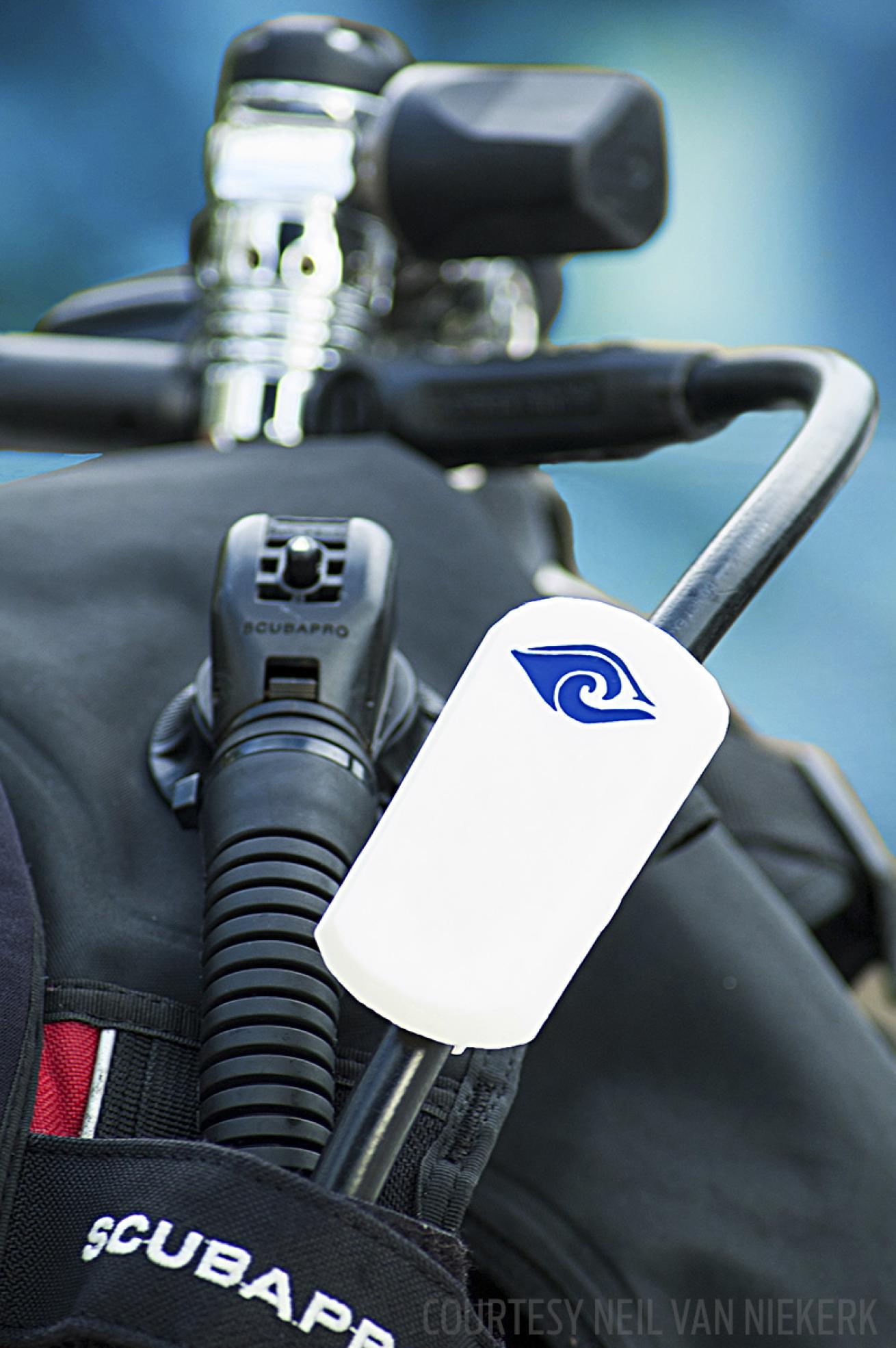Oceans Eye Wearable Technology Turns Divers Into Scientists

Courtesy Neil van NiekerkOceans Eye is designed to latch onto scuba gear.
Most ocean data is collected 10 miles offshore — not exactly convenient for land-based scientists. That inspired climatologist Karsten Shein and marine conservationist Peter Quilliam to ponder the question, “Wouldn’t it be cool if we could use divers to collect data?”
And so, the team created Ocean’s Eye, a 4-inch device designed to attached to dive gear, collecting scientific data each time a diver enters the water.
It works by syncing with a smartphone or tablet prior to the dive, giving OE access to the diver’s GPS coordinates. In water, OE tracks not only depth movements, but lateral movements as well, creating a 3D profile of a dive — a first in the scuba industry.
All the while, it’s gathering data on temperature, available light and conductivity via an algorithm to find the water’s salinity.
“And it measures depth much more accurately than most dive computers because it’s using a science-level instrument,” says Neil van Niekerk, one of the four founding partners, along with Shein, Quilliam and Jenny Parmar.
At the end of the dive, says van Niekerk, “The device then uses Bluetooth to connect to the smart device seamlessly — it’s nothing the user has to do. Then once the smart device enters back into range, it pushes the data points to a server.”
The developers plan to team with dive resorts, outfitting instructors with the device, as they are in the water daily, providing the science community with up-to-the-minute info on what’s happening on reefs.
“This would allow scientists to see if there was a trend or a warning,” says van Niekerk.
That warning could allow scientists to write grant proposals to send higher-level instruments where needed to conduct further studies, with the end goal to prevent devastation events such as the coral-bleaching that lasted from 2014 to 2017 and destroyed reefs worldwide.
The OE team wants citizen scientists to join the movement as well.
“The end-user could also purchase the unit, so that they, too, could play the game.”
As with a FitBit, divers can share data with friends and earn badges for the destinations they’ve logged.
In order keep the experience inclusive, van Niekerk says, “The idea is to keep the product cost low — as low as feasibly possible.”
Right now, the device is estimated to cost between $99 and $199, depending on the accuracy of the sensors.
“The more zeroes you have in the data collected, the greater the accuracy — but that also means more zeroes added to the cost of the bottom line,” he says. “We still need to find the happy point with the science-level data and the cost.”
As for who can make use of the data, the OE team says schools and universities will be granted free access. Beyond the educational communities, it’s undecided who will have access to the data and at what cost.
Says van Niekerk, “That’s not something we’re focusing on right now.”
They’re still refining the prototype, aiming to have something market ready by the end of the year.
He adds, “Our biggest focus is getting the devices out there so we can collect the data.”
MORE SCUBA NEWS
Cue Celine Dion: Underwater Tourists Head for Titanic
Behind the Scenes Photos From ScubaLab's 2017 Regulator Test
Can We Figure Out What’s Killing These Rare Whales in Time to Save Them?










